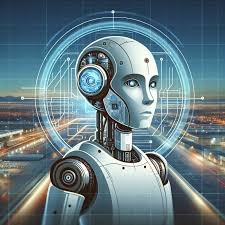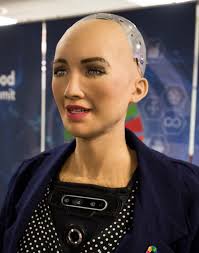Robotics

Introduction
Robotics combines mechanics, electronics, and software to create machines that sense, decide, and act. Robots use sensors to perceive the world, processors to reason, and actuators to move or manipulate objects. Design choices balance capability, safety, cost, and energy efficiency for the intended environment. Robots operate in many forms: fixed manipulators, mobile platforms, aerial drones, underwater vehicles, and humanoids. Software stacks implement perception, planning, control, and human-robot interaction layers. Testing begins in simulation and moves to hardware-in-the-loop before field deployment. Maintenance, firmware updates, and secure communication are essential for long-term reliability. Ethics, privacy, and safety standards guide responsible robot design and deployment. Robotics is a collaborative discipline: mechanical, electrical, software, and domain experts working together. Clear interfaces and documentation help teams iterate and maintain robotic systems effectively.
Core components
- Mechanical — frames, links, joints, grippers, wheels, legs.
- Sensors — cameras, LiDAR, ultrasonic, IMU, tactile, microphones.
- Actuators — DC/BLDC motors, servos, steppers, linear actuators, pneumatics.
- Controllers — microcontrollers, SBCs, real-time OS for deterministic control.
- Power — batteries, power distribution, charging strategy, power management.
- Software — drivers, middleware (like ROS), perception, planners, safety modules.
- Communication — CAN, I2C, SPI, Ethernet, Wi-Fi, MQTT, secure channels.
Sensing and perception
Vision systems detect objects, people, and lanes using cameras and deep learning models. Depth sensing (RGB-D, stereo, LiDAR) builds 3D maps for navigation and manipulation. IMUs provide orientation and short-term motion tracking; encoders measure joint positions. Tactile and force sensors enable safe grasping and compliant interaction with fragile objects. Sensor fusion combines modalities to reduce noise and increase robustness in real environments. Perception pipelines include filtering, segmentation, classification, and pose estimation. Real-time requirements dictate on-device processing for latency-sensitive tasks. Edge inference and optimized models let robots run perception without constant cloud roundtrips. Calibration and periodic re-calibration keep sensor outputs aligned and accurate. Privacy-preserving perception (on-device anonymization) protects users while keeping functionality.
Motion, actuation and control
- Actuators provide torque or linear force—choose based on precision, torque, and backdrivability.
- Transmission (gearboxes, belts) trades torque for speed and affects control fidelity.
- Low-level control uses PID, feedforward, and encoder feedback loops for position/velocity.
- Mid-level planners generate trajectories respecting kinematic and dynamic constraints.
- High-level behaviors use state machines, behavior trees, or learning-based policies.
# Simple robot loop (python-like pseudocode)
import time
def read_sensors():
# returns {'dist': value, 'imu':(...), 'camera':...}
return {'dist': 25}
def step():
s = read_sensors()
if s['dist'] < 10:
stop_motors()
else:
move_forward()
while True:
step()
time.sleep(0.05)
Common applications
- Manufacturing: precise, repeatable assembly and inspection.
- Healthcare: surgical assistance, rehabilitation, logistics in hospitals.
- Agriculture: automated seeding, monitoring, and targeted spraying.
- Exploration: planetary rovers and underwater ROVs for science missions.
- Service: reception, guidance, cleaning, and last-mile delivery robots.
- Education: programmable kits and interactive teaching robots for STEM skills.
- Search & Rescue: rugged mobile robots for dangerous environments.
Design & testing practices
Start with requirements, sketch mechanical concepts, build CAD models and BOMs. Simulate sensors and dynamics in Gazebo, PyBullet, or similar to catch obvious issues. Use hardware-in-the-loop and staged testing to validate control before full deployment. Implement safety features: e-stops, watchdog timers, soft limits, and collision avoidance. Plan maintenance: spare parts, actuator calibration, and firmware update procedures. Log telemetry and monitor remotely to detect degradations early and schedule preventive maintenance. Document APIs, wiring, and calibration steps clearly — good docs speed up future fixes. Prioritize security: signed firmware, encrypted channels, and access control to prevent tampering. Engage users early to refine interfaces and to ensure the robot meets real needs. Iterate quickly with modular designs to reduce risk and speed improvements.
Famous robots and examples
Rashmi

Rashmi is a humanoid robot designed for rich multilingual interaction with regional audiences. Speech recognition and NLP let her interpret user questions and respond in Hindi, English, and local languages. Vision sensors detect faces and gestures to maintain engagement and to orient the robot safely. Actuators animate facial features and arm gestures to make communication natural and expressive. Embedded controllers synchronize audio, motion, and sensor fusion under real-time constraints. She is used in outreach and education to explain safety, health, and basic STEM concepts to local communities. Energy and scheduling considerations ensure she can run multiple sessions with predictable charging intervals. Interaction logs are analyzed to improve dialog flows and to remove recurring misunderstandings. Rashmi exemplifies socially-aware robotics bridging language and cultural context with technology. Maintenance includes periodic language model updates and actuator calibration for smooth expression.
Champak

Champak is an interactive storytelling and teaching robot crafted for young learners in public spaces. He uses microphones and proximity sensors to sense audience size and attention levels before starting. Actuators move limbs, display panels, and simple facial cues to enrich stories and signal questions. Onboard lessons and quizzes are modular, so teachers can load new content and schedule sessions. Adaptive pacing adjusts complexity based on quiz results and engagement metrics gathered during sessions. Safety features include low-voltage electronics, rounded casing, and limited actuator forces for child safety. Champak’s controller manages audio-visual sync, lesson flow, and interaction logging for teachers to review. Battery management allows full-day operation in school environments with midday charging windows. Champak promotes collaborative tasks, encouraging children to solve puzzles together using robot prompts. Regular updates refine voice clarity, story packs, and attention detection algorithms for better learning outcomes.
Mitra

Mitra is a service humanoid that greets and guides visitors in public buildings and healthcare settings. LiDAR and ultrasonic sensors provide robust navigation and collision avoidance in crowded areas. Face recognition enables personalized greetings and can trigger context-aware instructions for frequent users. Actuators provide pointing, head turns, and subtle motions that aid wayfinding and explanation of processes. Controllers fuse sensor streams so movement, speech, and displays remain coordinated and responsive. Remote supervision and teleoperation allow staff to assist when queries exceed Mitra’s programmed scope. Anonymized logging supports analytics while preserving visitor privacy per deployment policies. Predictive maintenance alerts warn operators of actuator wear or battery health degradation. Mitra reduces repetitive queries, freeing staff for higher-value tasks and improving visitor flow. Security measures include encrypted telemetry and role-based access to remote control interfaces.
RADA

RADA operates in service counters to guide customers, manage queues, and deliver basic information. Touch screens and voice input provide multi-modal access for different user abilities and preferences. Proximity and camera sensors detect when a customer approaches and adapt prompts accordingly. Actuators animate simple displays, pointers, or small screens to guide a user through a process step-by-step. Controllers interface securely with backend systems for appointment checks or status updates while protecting PII. RADA can host short educational modules like financial literacy, targeted by age or group. Design choices favor soft exteriors, rounded corners, and low-impact actuators to minimize injury risk. Operational analytics help managers reduce wait times and identify peak load patterns for staffing decisions. Maintenance routines include regular software patches, screen cleaning, and actuator checks to ensure uptime. RADA demonstrates how service robots can be both informative and approachable in public spaces.
ASIMO

ASIMO is a pioneering humanoid noted for bipedal locomotion, balance, and coordinated motion. Its sensors and actuators work together to climb stairs, walk smoothly, and perform simple object transfers. High-rate control loops and sensor fusion allow dynamic balance and recovery from small disturbances. ASIMO’s perception stack recognizes human gestures and voice commands to enable guided demonstrations. The platform serves as a research benchmark for bipedal dynamics, safety, and human-aware motion planning. Energy budgeting and efficient actuators are critical for practical demo durations and repeatability. Maintenance focuses on encoder calibration, joint lubrication, and periodic sensor alignment. ASIMO inspired many follow-up research projects aiming to make humanoids more robust and useful. The robot highlights how mechanics, control theory, and perception must integrate tightly for safe mobility. ASIMO’s legacy is in teaching engineers how to build and validate complex, mobile humanoid systems.
Sophia

Sophia is a social humanoid platform emphasizing facial expressiveness and conversational interaction. Facial actuators allow dozens of subtle expressions; eye and head motion help create natural turn-taking. Audio-visual sensors feed language models and emotion-detection modules to produce context-aware replies. Controllers synchronize speech, facial motors, and gaze to maintain conversational coherence during exchanges. Sophia’s public appearances highlight topics like AI ethics, social robotics, and human-centered design. Data from interactions (handled under privacy rules) helps improve dialogue models and reduce bias. Power and thermal systems are engineered to support back-to-back engagements with short recharge cycles. Sophia demonstrates how robots can be designed to foster public dialogue about technology and policy. Research using Sophia explores safe, empathetic conversational strategies and human trust factors. Her work shows the importance of careful dataset curation and bias mitigation in social AI deployments.
Atlas

Atlas is a high-performance humanoid platform focused on agility, balance, and dynamic tasks. High-bandwidth actuators and low-latency controllers let Atlas run, jump, and recover from perturbations. Sensor suites (IMU, force sensors, stereo cameras, LiDAR) provide full-body situational awareness. Motion planners compute whole-body trajectories that satisfy balance, torque, and collision constraints. Hardware-in-the-loop and simulation test complex maneuvers before committing them to the physical robot. Atlas is often used in search-and-rescue research where mobility on rubble and uneven terrain is vital. Thermal, power, and structural systems are tuned for repeatable experimental runs and safety testing. Continuous integration of control software and simulation data improves performance over successive iterations. Atlas sets benchmarks for dynamic locomotion and demonstrates the frontier of humanoid autonomy research. Its design shows trade-offs between speed, robustness, and complexity in advanced robotics.
Future directions and practical notes
- Swarm and collaborative systems: many simple robots cooperating to solve big tasks.
- Soft robotics: safer interaction with humans and fragile objects using compliant materials.
- Edge AI: on-device learning and inference for low-latency autonomy without constant cloud dependence.
- Energy innovations: denser batteries and energy harvesting to extend mission durations.
- Explainable and ethical AI: transparent decisions and fairness in robot behavior.
- Standardized safety frameworks: testing, certification, and verifiable runtime safety checks.
- Human factors and UX: intuitive interfaces, accessibility, and reduced cognitive load for operators.
- Maintenance planning: spare parts, calibration routines, and predictive maintenance based on logs.
- Simulation-to-reality workflows: minimize sim-to-real gaps via domain randomization and hardware calibration.
- Community and curriculum: open tools and training pathways to grow practical robotics skills.
# Sensor fusion and planning (pseudocode)
def loop():
s = read_all_sensors()
state = fuse(s)
plan = compute_plan(state, goal)
execute(plan)
while True:
loop()
Closing
This chapter provides a compact, practical view of robotics: components, sensing, control, example robots, and future directions. Use simulation early, test incrementally on hardware, and prioritize safety and user needs when deploying robots in real environments. Keep software modular, document interfaces, and plan maintenance to ensure long-term, reliable robotic systems. Robotics is a hands-on field—build, test, learn, and iterate with real users to make machines that truly help people.
MCQs
1. Which component acts as a robot’s "eyes and ears"?
(a) Actuators
(b) Controllers
(c) Sensors
(d) Power source
► (c) Sensors
2. What does an actuator do?
(a) Process sensor data
(b) Convert electrical energy into motion
(c) Store power
(d) Communicate with servers
► (b) Convert electrical energy into motion
3. Which middleware is commonly used to structure robot software as nodes and topics?
(a) ROS / ROS2
(b) Django
(c) Flask
(d) Hadoop
► (a) ROS / ROS2
4. Which sensor is best for building precise 3D environment maps for navigation?
(a) Microphone
(b) LiDAR
(c) Thermometer
(d) Accelerometer
► (b) LiDAR
5. What is the usual purpose of an IMU in a robot?
(a) Measure distance to obstacles
(b) Provide orientation and motion sensing (accelerometer + gyroscope)
(c) Detect color
(d) Provide high-resolution images
► (b) Provide orientation and motion sensing (accelerometer + gyroscope)
6. Which control approach is commonly used for low-level motor loops?
(a) A* search
(b) PID control
(c) K-means clustering
(d) PageRank
► (b) PID control
7. What does SLAM stand for?
(a) Simple Linear Actuator Model
(b) Simultaneous Localization and Mapping
(c) Sensor Link and Management
(d) System Level AI Module
► (b) Simultaneous Localization and Mapping
8. Which robot from the chapter is designed for multilingual educational outreach in regional languages?
(a) Atlas
(b) Champak
(c) Rashmi
(d) RADA
► (c) Rashmi
9. Which robot focuses on storytelling and classroom interaction for children?
(a) ASIMO
(b) Champak
(c) Spot
(d) Sophia
► (b) Champak
10. Which robot is primarily used as a service assistant to guide visitors and reduce staff workload?
(a) Mitra
(b) Solaris
(c) Curiosity
(d) Atlas
► (a) Mitra
11. Which robot helps customers at banks with queue management and simple information?
(a) RADA
(b) Rashmi
(c) Champak
(d) ASIMO
► (a) RADA
12. ASIMO is best known for demonstrating advances in:
(a) Speech-to-text only
(b) Bipedal mobility and balanced locomotion
(c) Agricultural seeding
(d) Underwater mapping
► (b) Bipedal mobility and balanced locomotion
13. Sophia is mainly highlighted in the chapter for:
(a) High-speed locomotion
(b) Social interaction and expressive conversation
(c) Agricultural automation
(d) Warehouse logistics
► (b) Social interaction and expressive conversation
14. Atlas is primarily a platform for research into:
(a) Energy harvesting
(b) Dynamic locomotion, balance, and obstacle negotiation
(c) Speech translation
(d) Financial transaction automation
► (b) Dynamic locomotion, balance, and obstacle negotiation
15. Sensor fusion means:
(a) Combining data from multiple sensors to improve perception
(b) Physically welding sensors together
(c) Using a single sensor for all tasks
(d) Isolating sensors for safety
► (a) Combining data from multiple sensors to improve perception
16. Which of the following is a common safety feature in robots?
(a) Emergency stop (E-stop)
(b) Random motor acceleration
(c) Disabled sensors
(d) Removing all feedback loops
► (a) Emergency stop (E-stop)
17. Which development practice helps reduce the sim-to-real gap?
(a) Domain randomization and calibration
(b) Only testing on hardware without simulation
(c) Avoiding sensor fusion
(d) Removing safety checks in simulation
► (a) Domain randomization and calibration
18. What is a key ethical concern when deploying social robots like Sophia or Rashmi?
(a) They move too fast
(b) Privacy, data handling, and potential bias in interactions
(c) They use too much electricity
(d) They cannot open doors
► (b) Privacy, data handling, and potential bias in interactions